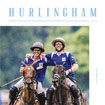From High Goal to Hollywood – the history of polo in the USA – Part 7
By Victoria Elsbury-Legg
Click here for part 6
The inaugural playing season for the International Polo Club Palm Beach (IPC) was 2004 – created by amalgamating William T. Ylvisaker, Summerfield Johnston Jr, Mickey Tarnapol and John B. Goodman’s private polo grounds, the idea was to create the perfect platform for high-goal competition – ‘Created by players for players, the International Polo Club Palm Beach was born out of the dream to build a facility to showcase the incredible skills of the ponies and players that dominate the sport.’ With this in mind, the historic 26-goal C.V.Whitney Cup was first hosted at the IPC in this year, with the clubhouse and other amenities under construction, the Palm Beach polo scene was set to take the world by storm. Continuing to grow, the club celebrated its 10th anniversary season in 2013, following a decade which saw an increase in pitches (nine), private boxes, an Olympic swimming pool, wine room and bar called The 7th Chukker added to the facilities – not to mention the world’s largest collection of polo books. With a main stadium featuring grandstands that hold around 1640 spectators, the International Polo Club Palm Beach is now the biggest polo viewing structure in the USA. It is also world renown as the Club that hosts the American Triple Crown of high goal polo.
Aside from the IPC, across America (a country whose very roots owe so much to the humble horse) there are numerous other polo clubs where players enjoy polo at all levels. Considered to be the finest in Western America is the Santa Barbara Polo & Racquet Club (SBPRC) in California, nestled in the foothills of the Santa Ynez Mountains and the Pacific Ocean. Founded in 1911, it is the third oldest continuing member of the United States Polo Association. Alongside three fields, the club has an arena, extensive stabling, a fitness centre and many other amenities. It is also the place where crowds gather each August to witness the high goal action of the historic Pacific Coast Open tournament, now sponsored by Gulfstream. Considered by many as the ‘finest polo trophy for which horsemen of any land have ever competed’, the 106 year old Pacific Coast Open Trophy has a history every bit as spectacular as the handcrafted silver cup, decorated with 18-caret gold and semi-precious stones, whose wooden base is engraved with so many world-renowned polo surnames.
It is not possible to name in this article all the clubs the length and breadth of The States who are part of the awesome and eclectic rich tapestry of US polo; that is best left to polo players H. Jeremy Chisholm, Philip L. B. Iglehart, Leverett S. Miller and George C. Sherman Jr. who together formed The Museum of Polo and Hall of Fame (a non-profit organization to celebrate the sport of polo) in Lexington, Kentucky in 1988, with the first inductions into the Hall of Fame being made in 1990, the Museum of Polo and Hall of Fame is now located in Lake Worth, Florida.
One Club, however that is frequently featured in the US polo headlines is The Grand Champions Polo Club in Wellington, Palm Beach, Florida. Owned by high goal patrons Marc and Melissa Ganzi the club hosts numerous tournaments each year, and like Aspen Valley Polo Club, is particularly committed to encouraging the younger generations of US players to strive to reach their potential both on and off the pitch, creating programmes like ProKidz in 2014, where junior players are teamed up with top pros as mentors, such as Miguel Novillo Astrada, Mike Azzaro and Juan Bollini. In April of this year at a surprise ceremony, Melissa Ganzi was awarded the Polo Training Foundation’s Volunteer of the Year Award in recognition of her contribution and commitment to the sport of polo.
To be continued


